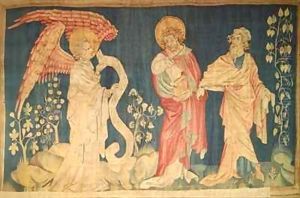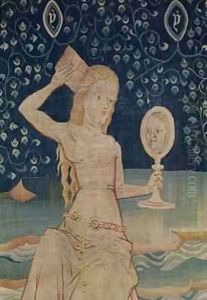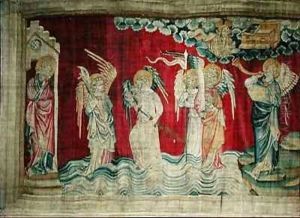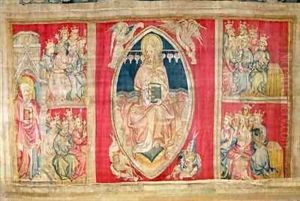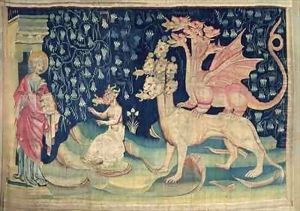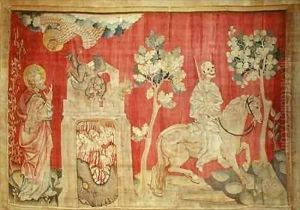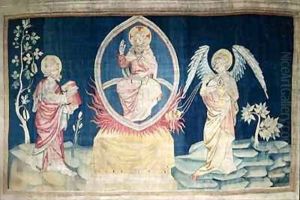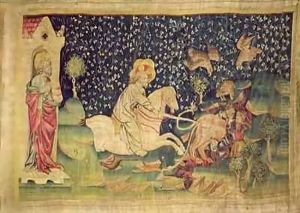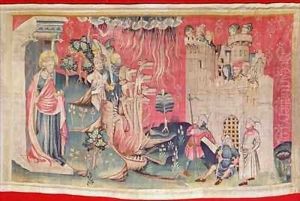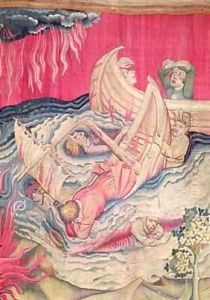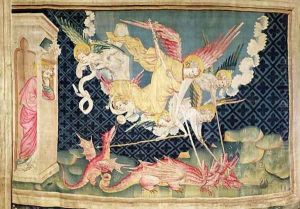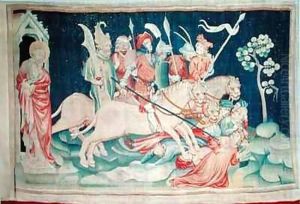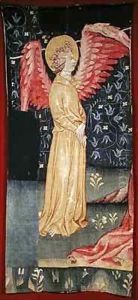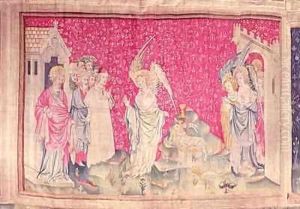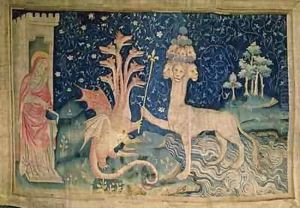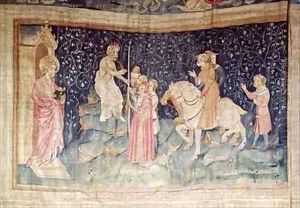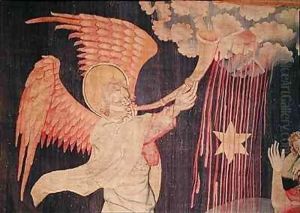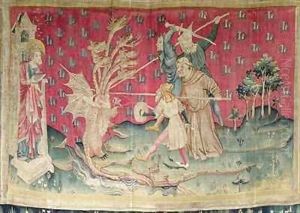Nicolas Bataille Paintings
Nicolas Bataille was a French weaver and producer of tapestries, active during the 15th century. Born around the year 1400, Bataille is most renowned for his work in the creation of the 'Apocalypse Tapestry', which was commissioned by Louis I, Duke of Anjou. The tapestry, originally over 140 meters long, is considered one of the greatest works of medieval European art. It depicts scenes from the Book of Revelation, the last book of the Christian Bible.
Nicolas Bataille's workshop was based in Paris, and he was known to be an influential figure in the court circles. His work on the 'Apocalypse Tapestry' began in the 1370s, but he continued the tradition of tapestry making through the next several decades, contributing to the high reputation of French tapestries during this period. Bataille's tapestries were known for their intricate designs and vivid storytelling, which often featured religious and historical themes.
As the master of a workshop, Bataille would have overseen a team of weavers and apprentices, guiding the creative process and ensuring the quality of the tapestries produced. The prominence of his workshop attracted commissions from the nobility and the wealthy elite, who desired luxurious tapestries to adorn their homes and to signify their status.
Despite the fame of his tapestries, little is known about Bataille's personal life, and few other works can be securely attributed to him. However, his contribution to the art of tapestry making placed him among the notable artists of the medieval period in France. Nicolas Bataille died in 1477, leaving behind a legacy that would influence tapestry makers for generations to come. His most famous work, the 'Apocalypse Tapestry', is now preserved in the Château of Angers, in the region of Pays de la Loire, France.
